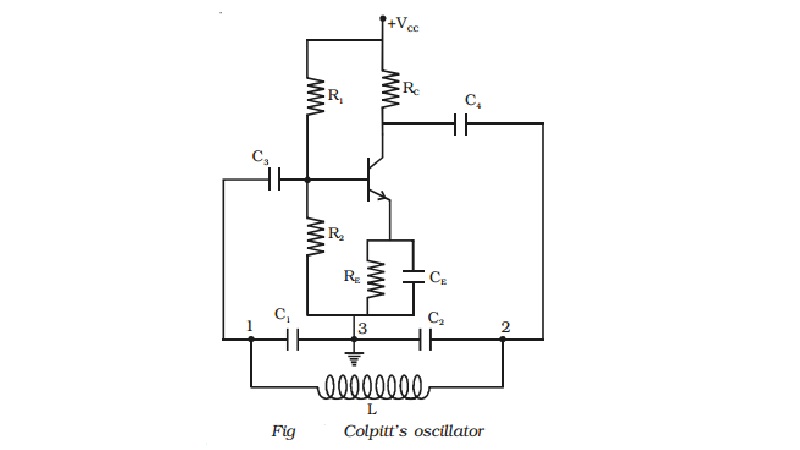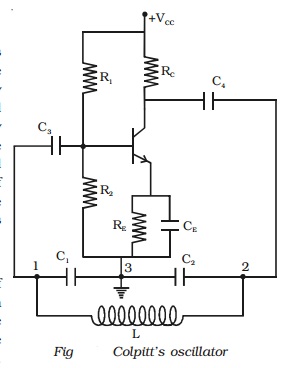Chapter: 11th 12th std standard Class Physics sciense Higher secondary school College Notes
Colpitt's oscillator

LC oscillators
A transistor can work
as an LC oscillator to produce undamped oscillations of any desired frequency,
if tank and feedback circuits are properly connected to it. There are different
LC oscillators used in electronic circuits, of which, the working principle of
Colpitt's oscillator is discussed here.
Colpitt's oscillator
The circuit diagram of
Colpitt's oscillator is shown in Fig. The resistance R1, R2 and RE provide the
sufficient bias for the circuit The frequency determining network is the
parallel resonant circuits consisting of capacitors C1, C2
and the inductor L. The junction of C1 and C2 is earthed.
The function of the capacitor C4 is to block d.c and provide an a.c.
path from the collector to the tank circuit. The voltage developed across C1
provides the positive feedback for sustained oscillations.
Working
When the collector
supply voltage is switched on, a transient current is produced in the tank
circuit and damped harmonic oscillations are produced. The oscillations across
C1 are applied to the base emitter junction and appear in the
amplified form in the collector circuit. If terminal 1 is at positive potential
with respect to terminal 3 at any instant, then terminal 2 will be at negative
potential with respect to 3, since 3 is grounded. Hence points 1 and 2 are 180o
out of phase. The amplifier produces further phase shift of 180o.
Thus the total phase shift is 360o. In other words, energy supplied
to the tank circuit is in phase with the oscillations and if A = 1, oscillations are sustained in the
circuit.
The frequency of
oscillations is given by f = 1/2πLC
Where C= C1C2/C1+C2
F=1/2π rt((C1+C2)LC1C2)

Related Topics